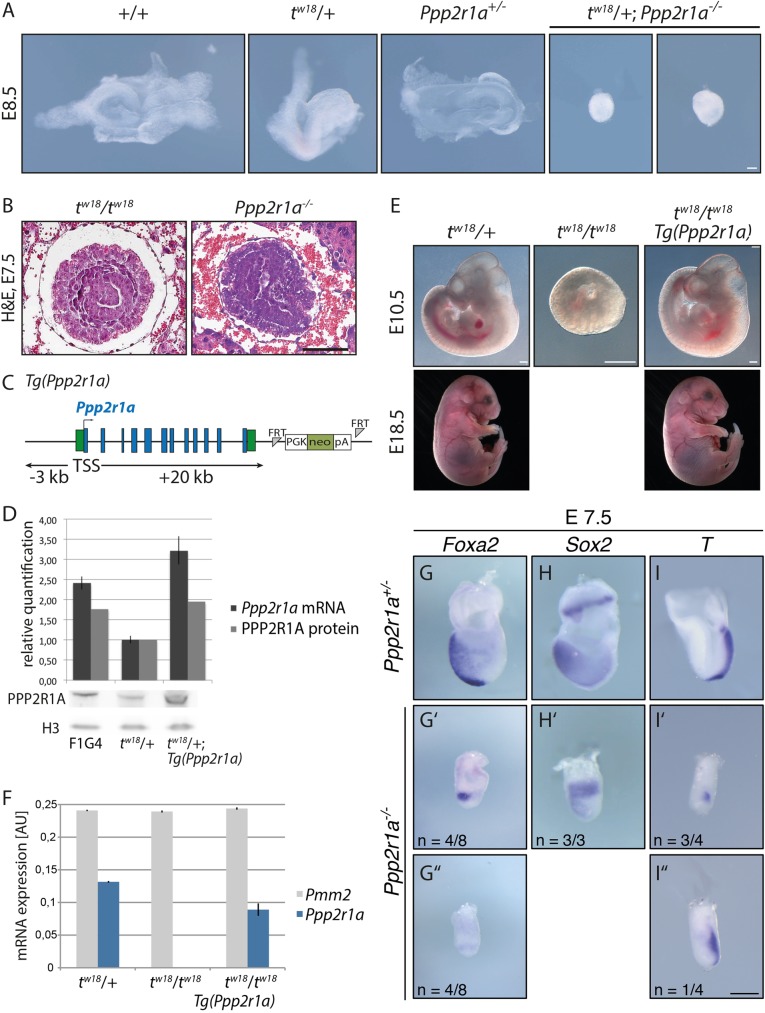Fig. 7.
Knockout of Ppp2r1a reconstitutes and Ppp2r1a expression rescues the tw18 homozygous phenotype. (A) Morphology of E8.5 embryos derived by crossing tw18/+ and Ppp2r1a+/− mice; embryos were genotyped by PCR following imaging. tw18/+;Ppp2r1a−/− embryos failed to gastrulate and resemble tw18 homozygotes. (B) Histological H&E-stained paraffin sections of E7.5 Ppp2r1a knockout and tw18/tw18 embryos. The amniotic cavities of both embryos are filled with cells. (C) Rescue construct containing the Ppp2r1a locus comprising 3 kb upstream and 20 kb downstream of the transcription start site (TSS). (D) Test for functioning of the Ppp2r1a rescue construct in ESCs. Ppp2r1a RNA expression analyzed by qPCR and normalized to Pmm2 and Hmbs (upper panel), PPP2R1A protein levels analyzed by western blotting (lower panel) followed by quantification (upper panel) relative to H3 protein. Expression of the rescue transgene increased Ppp2r1a mRNA and protein levels in the transgenic ESC clone. Error bars indicate standard deviation of technical replicates. (E) Ppp2r1a expression rescues the tw18 homozygous phenotype. Embryos from breedings of tw18/+ females with tw18/+, Tg(Ppp2r1a) males were analyzed at E10.5 and E18.5; homozygous tw18 embryos carrying the transgene Tg(Ppp2r1a) developed normally at least until E18.5. (F) qPCR analyses of E10.5 embryos from (E). Ppp2r1a expression levels were restored to 67% of the single wild-type allele of tw18 heterozygotes by the rescue construct. Error bars indicate standard deviation of technical replicates. (G-I″) WISH analysis of E7.5 Ppp2r1a+/− and Ppp2r1a−/− mouse embryos for the expression of Foxa2, Sox2, and T. Scale bar: 100 µm in A,G-I″ and 500 µm in E.

